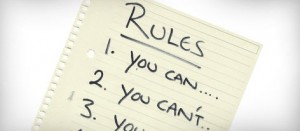If you are planning a wedding and it has to be a traditional Jewish wedding, you may be feeling overwhelmed. There are many traditions to uphold, but they are also lots of fun! So don’t worry. From the kidushin to the chuppah, we’ve got you covered.
Before the Ceremony
The ceremony for a traditional Jewish wedding generally takes place after sundown on Saturdays, or any time on Sundays. The bride and groom are not allowed to eat until after the ceremony is over.
Before the wedding takes place, the ketubah is signed by the groom, in the company of two witnesses. This is a legally binding Jewish contract, and outlines what the groom is expected to give the bride in the marriage. This includes food, clothes, marital relations, friendship, love, and communication, and outlines that all of these things are necessary to a happy union. Many ketubahs are beautiful pieces of art and are framed and hung in the home.
Next, in a tradition known as badeken, the bride’s face is veiled (usually by the groom) and a prayer is said for her. The couple hasn’t seen each other in at least 24 hours (sometimes up to 7 days) at this point, so it’s usually an emotional moment for both the bride and groom.
During the Ceremony
The ceremony takes place under a chuppah, or wedding canopy, and is officiated by a rabbi. The chuppah symbolizes the new home that the bride and groom will build together. When the ceremony is starting, the groom is led into the chuppah by the two fathers, while the bride is led by the two mothers, in a tradition called unterfirers. Finally, the bride circles the groom seven times when she arrives at the chuppah. This may come from Jeremiah 31:22 which says “A woman shall surround a man.” The number seven is said to mean perfection or completeness in the Bible.
A traditional chuppah where the Jewish bride and groom will take their vows.
A traditional Jewish wedding has two distinct parts, with the first known as the erusin (betrothal) or kiddushin (holiness). First, two blessings are given before the betrothal. The first is over a cup of wine, which the couple then tastes. The second is the betrothal blessing. Next, the groom is required to give something of value to the bride (usually a ring). The ring should be a plain gold band, to symbolize the simplicity and purity of their love. Lastly, they both exchange rings and vows.
In some ceremonies, the ketubah is read out loud in traditional Aramaic text and given to the bride to keep for the rest of her life. Following that, the second part of the ceremony begins. This is known as the nissuin, and contains seven blessings that are meant to highlight the new partnership and commitment. The blessings are given by the rabbi, or by individuals who are specially selected. To be selected to recite a blessing is a big honour in this ceremony. After the blessings, the groom drinks from the cup of wine, and the bride follows suit.
The ketubah is presented to the bride as a promise from the groom.
Finally comes the part that almost everyone is familiar with…the breaking of the glass. After the rings and blessings, the groom crushes the glass (usually wrapped in cloth) with his right foot and guests shout “Mazel tov!” which means “congratulations.” In some contemporary weddings, a light bulb is used instead since it’s easier to break. This signifies that the ceremony is over and is greeted with loud cheers and applause from the crowd.
After the Ceremony
In order to complete the ceremony, seclusion is necessary, so yichud is practiced. This means leaving the bride and groom alone for 10-20 minutes in a room. It can take place in any room, from the rabbi’s study to a synagogue classroom. Husband and wife take some time away from family and friends to reflect on their new vows and the ceremony.
Now the celebration can begin! Wedding food is served as well, so this is a great time to hire wedding caterers that is familiar with Kosher and traditional Jewish dishes. Several special dances are customary in Jewish weddings, with the hora being most recognized. The bride and groom are raised on chairs for anywhere from 10-30 minutes, depending on the energy from the crowd. DJs or wedding entertainment are great to have on-hand to get the party started and keep the crowd excited.
In short, a Jewish wedding is all about love, family, and commitment. They’re a beautiful blend of tradition and romance, and end with a huge party. What a perfect day!















